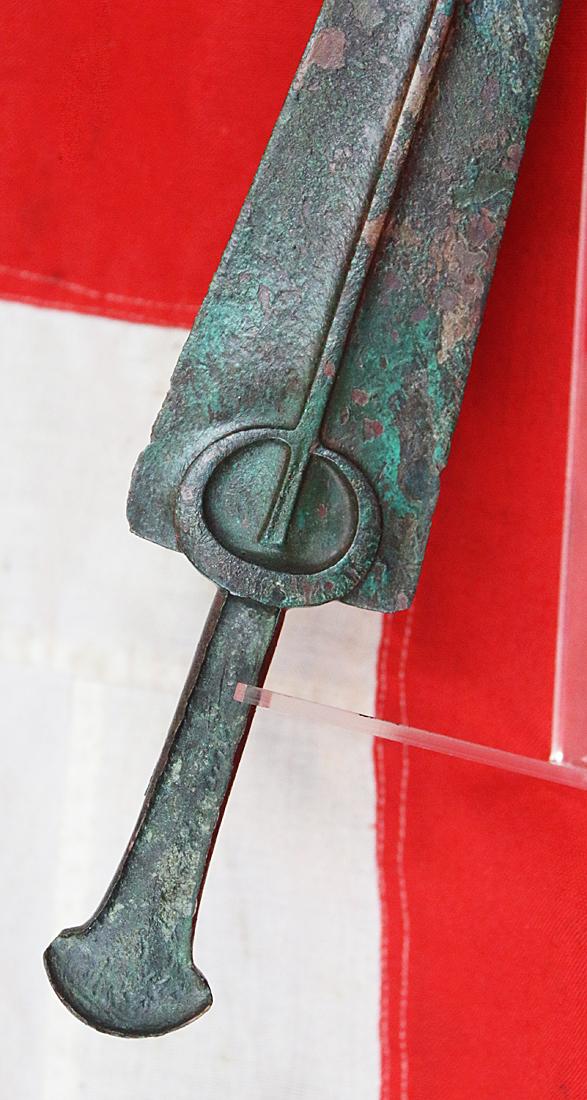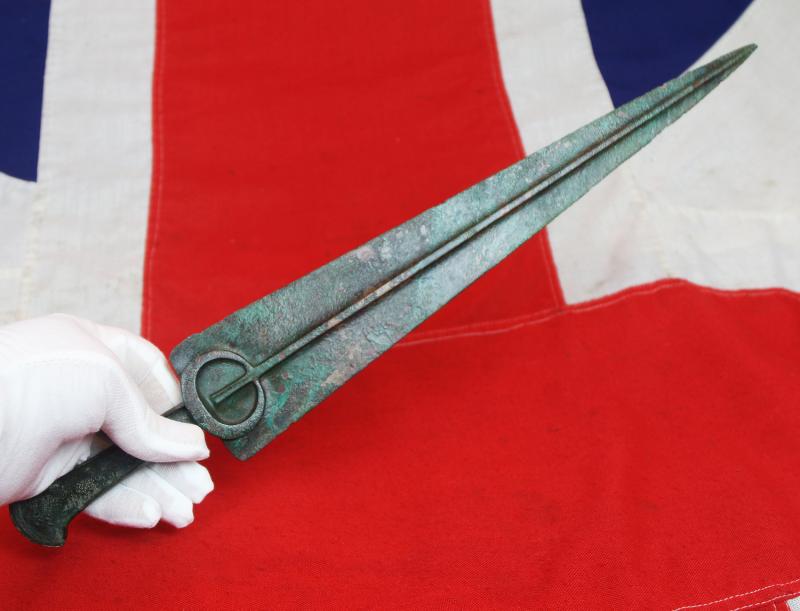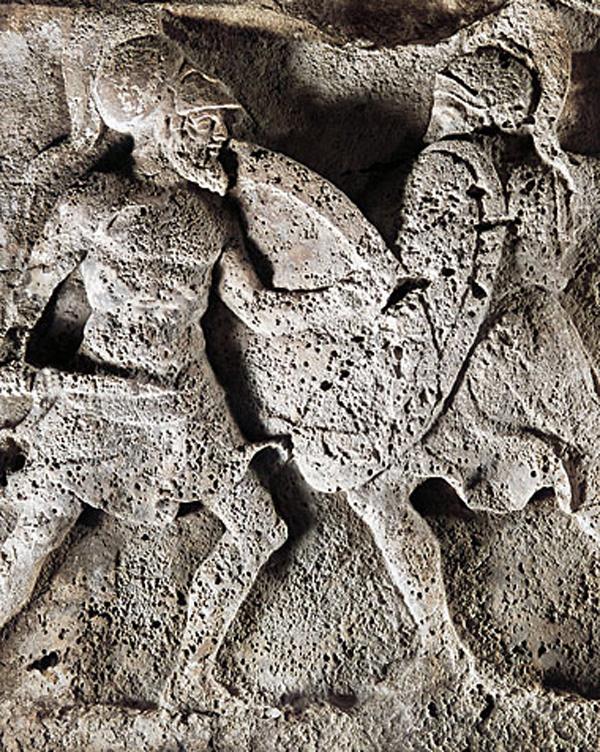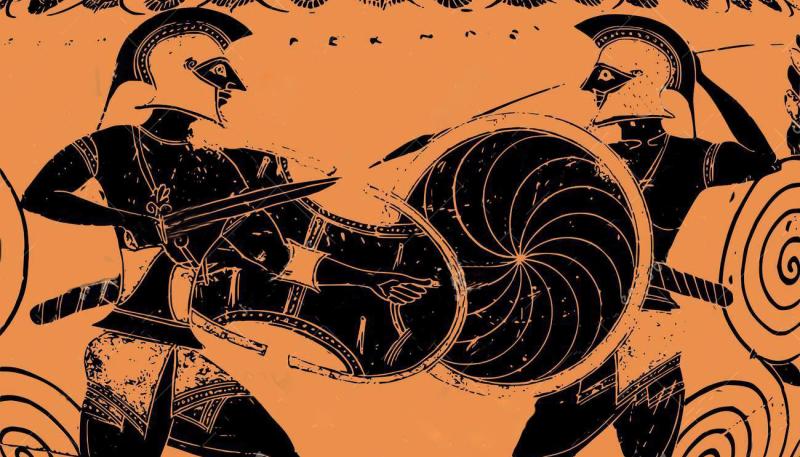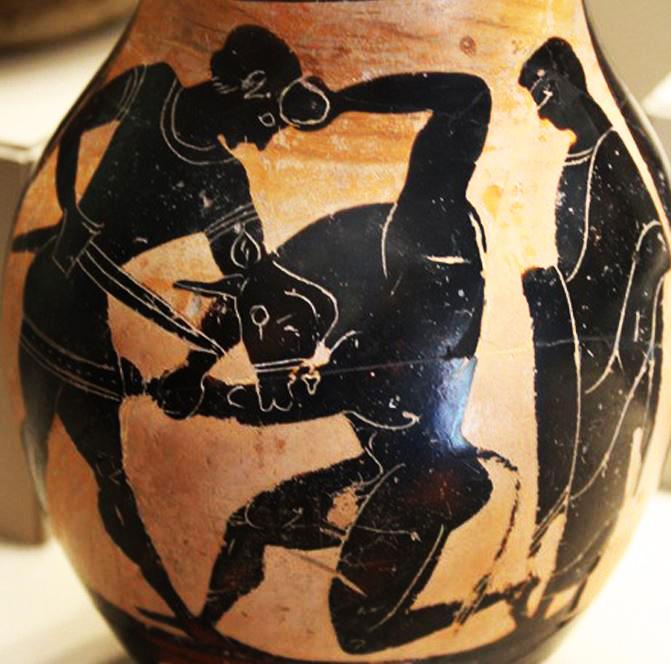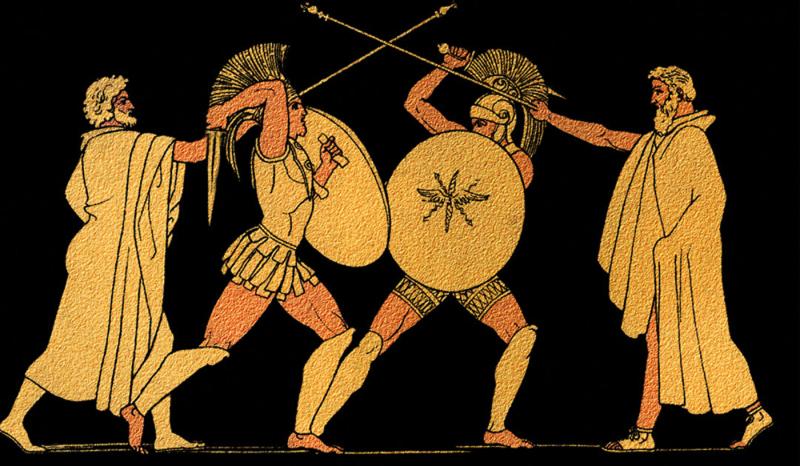A Simply Exquisite Original Bronze Age Short Sword Used From The Trojan Wars to the Greco-Persian Wars
From the late 2nd millennium BC. to early 1st Millenium BC.
A bronze sword with tapering long central ribbed sharply graduating tapering blade with squared shoulders, a hand and pommel grip with open panels that would likely have been fitted with organic carved grip plates of possibly ivory, carved horn or wood. A sword that could have been traded with the Archean Greeks, the Mycenean Greeks the Trojan peoples and The Hitites.
The trade of Bronze Age weaponry followed trade routes that started in the the Assyrian Empire, East of Babylon, right through to the Mediterranean region, and all of empires and kingdoms in between. Also, all manner of Bronze Age utilitarian wares, personal adornments, and tools came from this famed bronze smithing region and their trading merchants.
In Greek mythology, the Trojan War was waged against the city of Troy by the Achaeans (Greeks) after Paris of Troy took Helen from her husband Menelaus, king of Sparta. The war is one of the most important events in Greek mythology and has been narrated through many works of Greek literature, most notably Homer's Iliad. The core of the Iliad (Books II – XXIII) describes a period of four days and two nights in the tenth year of the decade-long siege of Troy; the Odyssey describes the journey home of Odysseus, one of the war's heroes. Other parts of the war are described in a cycle of epic poems, which have survived through fragments. Episodes from the war provided material for Greek tragedy and other works of Greek literature, and for Roman poets including Virgil and Ovid.
The ancient Greeks believed that Troy was located near the Dardanelles and that the Trojan War was a historical event of the 13th or 12th century BC, but by the mid-19th century AD, both the war and the city were widely seen as non-historical. In 1868, however, the German archaeologist Heinrich Schliemann met Frank Calvert, who convinced Schliemann that Troy was a real city at what is now Hisarlik in Turkey. On the basis of excavations conducted by Schliemann and others, this claim is now accepted by most scholars.
Whether there is any historical reality behind the Trojan War remains an open question. Many scholars believe that there is a historical core to the tale, though this may simply mean that the Homeric stories are a fusion of various tales of sieges and expeditions by Mycenaean Greeks during the Bronze Age. Those who believe that the stories of the Trojan War are derived from a specific historical conflict usually date it to the 12th or 11th century BC, often preferring the dates given by Eratosthenes, 1194–1184 BC, which roughly correspond to archaeological evidence of a catastrophic burning of Troy VII, and the Late Bronze Age collapse. Legend has it that the war originated from a quarrel between the goddesses Hera, Athena, and Aphrodite, after Eris, the goddess of strife and discord, gave them a golden apple, sometimes known as the Apple of Discord, marked "for the fairest". Zeus sent the goddesses to Paris of Troy, who judged that Aphrodite, as the "fairest", should receive the apple. In exchange, Aphrodite made Helen, the most beautiful of all women and wife of Menelaus of Sparta, fall in love with Paris, who quit Sparta with her and returned to Troy. Menelaus's brother Agamemnon, king of Mycenae, led an expedition of Achaean troops to Troy and besieged the city for ten years because of Paris' insult. After the deaths of many heroes, including the Achaeans Achilles and Ajax, and the Trojans Hector and Paris, the city fell to the ruse of the Trojan Horse. The Achaeans slaughtered the Trojans (except for some of the women and children whom they kept or sold as slaves) and desecrated the temples, thus earning the gods' wrath. Few of the Achaeans returned safely to their homes and many founded colonies in distant shores. The Romans later traced their origin to Aeneas, Aphrodite's son and one of the Trojans, who was said to have led the surviving Trojans to modern-day Italy. 18 3/4 inches long
As with all our items it comes complete with our certificate of authenticity.
Code: 24765


